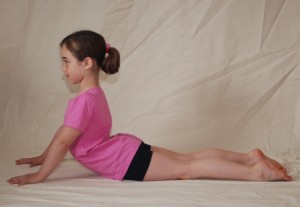 In the first hyoid post I covered certain functions of the hyoid – it supports the weight of the tongue, it aids in swallowing, and it allowed for the awakening of our ability to speak. It also acts as a central point connecting the whole upper body muscularly, and it can provide a launching pad for movements that involve the head neck and rib cage.
In the first hyoid post I covered certain functions of the hyoid – it supports the weight of the tongue, it aids in swallowing, and it allowed for the awakening of our ability to speak. It also acts as a central point connecting the whole upper body muscularly, and it can provide a launching pad for movements that involve the head neck and rib cage.
Let’s go through the muscles connecting the hyoid to the skeleton. The suprahyoid muscles, muscles above the hyoid, include digastric, stylohyoid, geniohyoid and the mylohyoid. These muscles connect the hyoid bone to the jaw and head. Two of the muscles below the hyoid, the sternothyroid and the thyrohyoid connect the sternum to the hyoid via the thyroid cartilage. The other two muscles that reside below the hyoid bone, the sternohyoid, and the omohyoid connect the hyoid to the sternum of the ribcage and the scapula of the shoulder girdle.
This means that the whole upper body—head, jaw, rib cage and shoulder girdle are muscularly connected through the hyoid bone and this creates interesting possibilities when it comes to movement as well as speech. An interesting thing to note about the omohyoid muscle that connects the hyoid to the shoulder blade is that its job is to strap down the jugular vein. As a result of this there is a small tendon in the middle of the muscle that covers the vein. If it wasn’t there we would be in pain every time the jugular pulsed.
The hyoid is my favorite bone for two reasons. The first is that the vocal chords, or vocal ligaments, are situated directly above the hyoid bone running in a line from the front to the back. If the head is misaligned the hyoid is out of place. When the hyoid is out of its correct placement in the body our voice will be unable to resonate at its fullest. The opposite is true as well. If you can pull the head back into proper alignment, the voice will always be at most resonant and clear. And if your voice is at its most resonant you know that your posture has to be fairly good.
And for me the ability to get the head back where it wants to be can be facilitated by aligning the hyoid bone. When you get your hyoid to its proper place you will find your true voice. And the fact all of the structures of the upper body are literally connected to the hyoid means that an upper body that moves in harmony, moves through the hyoid bone.
 One way to feel this is in the pose in yoga that is referred to as small cobra.
One way to feel this is in the pose in yoga that is referred to as small cobra.
- Lay on your belly with the hands on the floor by your chest.
- Lift the head, neck and chest up off of the floor and try to feelwhat initiates the movement.
- Unfortunately we often lift from the head and the rest of the upper body follows along.
- Try doing it again, this time initiating from the hyoid bone. If you are successful the head, ribcage and shoulder girdle all move as one piece together as they come up off of the ground.
The hyoid bone and its successful use and alignment present us with amazing opportunities for postural health and function. I can’t repeat enough that if you know how your body is meant to work, you are much more likely to use it correctly.
***
